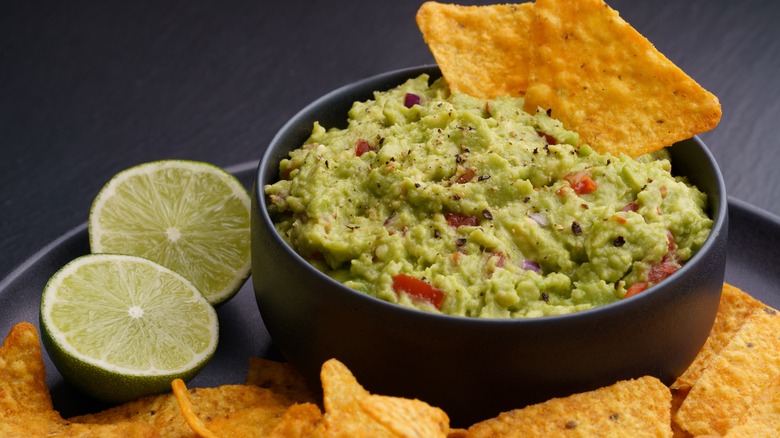Personalize Chili Pepper Prep For Different Spice Tolerances
A 2021 OnePoll survey highlighted how many Americans boast bold palates – 37% affirmed their ability to handle spicy foods. It also called attention to the wide differences in spice tolerance. Not everyone appreciates spicy foods and those who do may enjoy their spices at varying levels, from very mild to flaming hot.
Given these conflicting preferences, it may seem quite difficult to prepare spicy dishes – particularly those with chili peppers – that will appeal to everyone. Fortunately, there are ways to make spicy food more enjoyable for folks with low tolerances. One method is to simply add different amounts and types of chili peppers based on individual tolerance levels. Whether you're making Mexican cuisine or Indian curries, there is a wealth of options to choose from. Indian chilies run the gamut from mild Kashmiri to nuclear Naga. Meanwhile, Mexican food staples like jalapeño and serrano chili peppers aren't exactly mild, but they are far milder than habanero peppers.
If you want to serve dishes using the same chili peppers, but with milder versions available to some family or friends, there is also a solution. Remove the seeds inside them, and take out the white-colored pith as well. The chemical compound associated with spicy heat, capsaicin, is found in greater degrees in the pith and skin, so eliminating these heat-concentrated parts creates a milder version of the pepper. For the spice lovers, however, don't change a thing.
Minimizing spice via complementary ingredients
Those aren't the only ways to prep your chili peppers for different tolerance levels, however. Punching holes in a chili pepper to let some of its heat out also works. Additionally, some food items naturally counterbalance the spiciness of chili peppers. The fattiness of Avocados, for instance, tends to diminish the experience of spiciness. So does another guacamole ingredient: lime juice. In the case of lime juice, the acidity mitigates capsaicin's heat. Thus guacamole has two built-in taming effects for those adding chili peppers, in addition to what can be accomplished by using milder chili pepper varieties and removing seeds and pith.
Casein, a protein associated with dairy products, is also notable for the cooling effect it has on chili peppers. That may not mean much for Thai curries, which largely eschew dairy, but it can make a big difference for Indian-style curries, which commonly use ghee – a variety of clarified butter – as well as rich yogurts and creams. Casein may slo pop up in Mexican dishes, thanks to the frequent presence of cheeses and cream in signature dishes.
These basic tips and tricks allow for varying levels of spiciness, often with the same ingredients. So after prepping your chili peppers, simply incorporate them in ways that are appropriate for the individuals eating them.

